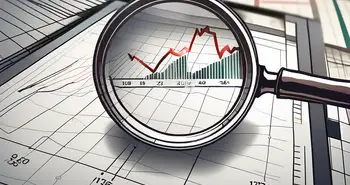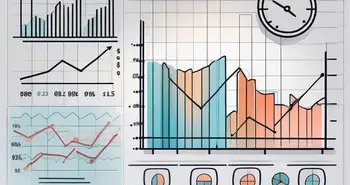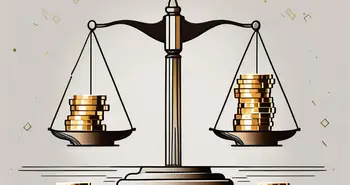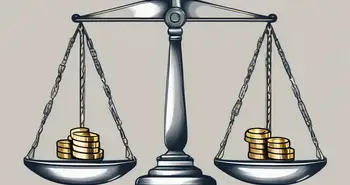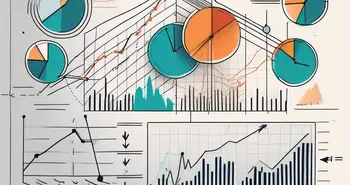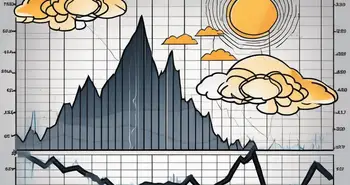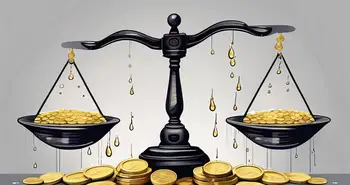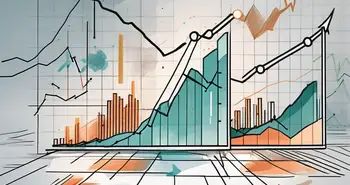Fair Value Gap Explained: How to Spot and Trade It
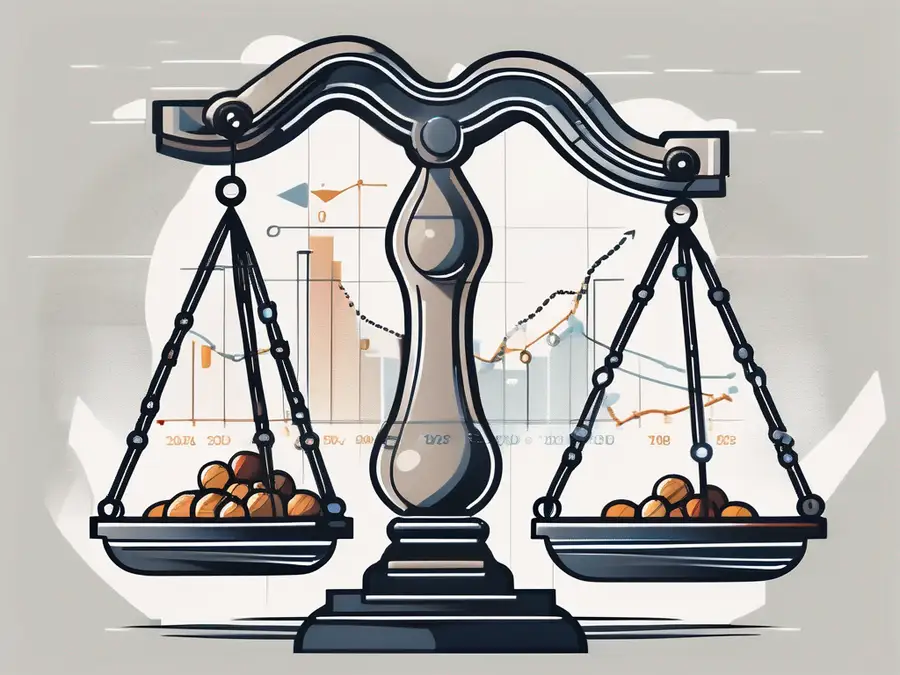
The concept of Fair Value Gap is crucial for investors, finance professionals, and anyone interested in effective asset management. This guide aims to provide an in-depth understanding of Fair Value Gap, its calculation, implications for investment decisions, and its presence across various industries.
Defining Fair Value Gap
At its core, the Fair Value Gap represents the difference between the market price of an asset and its intrinsic or fair value. Understanding this gap equips investors with the knowledge to make informed trading decisions and manage risks effectively.
The Concept of Fair Value
Fair value is a financial term that denotes the estimated worth of an asset based on objective calculations rather than subjective opinions or speculative trading. It reflects the true economic value, often judged through various valuation techniques such as discounted cash flows or comparative analysis.
Finally, the Fair Value Gap emerges when an asset's market price diverges from this calculated fair value. This discrepancy can indicate potential buying or selling opportunities for savvy investors looking to capitalize on undervalued or overvalued assets. For instance, when a stock is trading below its fair value, it may suggest that the market has not fully recognized the company's potential, presenting a chance for investors to buy at a bargain. Conversely, if a stock is trading above its fair value, it could signal that the market is overly optimistic, prompting investors to consider selling before a correction occurs.
The Importance of Fair Value in Financial Reporting
In financial reporting, fair value plays a critical role in maintaining transparency and accuracy. Accounting standards dictate that companies must evaluate their assets and liabilities at fair value to provide investors with a clear picture of their financial health.
This practice not only builds investor trust but also ensures that financial statements reflect real market conditions, enabling stakeholders to make informed decisions based on actual value rather than inflated figures. Furthermore, the application of fair value accounting can lead to more timely recognition of gains and losses, which is particularly important in volatile markets. By aligning reported values with current market conditions, companies can better inform investors about the risks and opportunities they face, ultimately fostering a more stable investment environment.
Additionally, the use of fair value measurements can enhance comparability among companies within the same industry. When firms report their assets and liabilities at fair value, it allows investors to assess their performance against peers more accurately. This transparency can drive competition and encourage companies to operate more efficiently, knowing that their market valuations are closely scrutinized. As a result, fair value not only serves as a critical tool for individual investors but also contributes to the overall health and integrity of the financial markets.
The Calculation of Fair Value Gap
Calculating the Fair Value Gap can be intricate but is essential for practical investment analysis. The process involves several components and calculations that, when combined, give you a clearer picture of asset performance and potential value.
Key Components in Fair Value Gap Calculation
- Market Price: The current trading price of the asset.
- Intrinsic Value: The estimated fair value, which can be derived from discounted cash flow analysis, comparable market analysis, or other valuation methods.
- Time Horizon: The period over which you expect the asset to reach its fair value.
Understanding these components is crucial for calculating the Fair Value Gap accurately. By having access to reliable data and acknowledging market conditions, investors can effectively assess risks and opportunities.
Understanding the Calculation Process
The calculation of the Fair Value Gap is relatively straightforward. Begin by identifying the market price and the intrinsic value of the asset.
The formula to find the Fair Value Gap looks like this:
Fair Value Gap = Market Price - Intrinsic Value
If the resulting number is positive, this suggests the asset is presently overvalued in the market. Conversely, a negative number indicates that the asset is undervalued. For example, if a stock is trading at $100, but its calculated fair value is $80, the Fair Value Gap is +$20. In this case, an investor might consider selling, anticipating a market correction.
The Role of Fair Value Gap in Investment Decisions
The Fair Value Gap serves as a vital tool in the decision-making toolkit for investors. By understanding this gap, investors can better assess their positions and re-evaluate assets based on market conditions.
Fair Value Gap and Risk Assessment
When evaluating investments, understanding the Fair Value Gap is pivotal for risk assessment. A significant gap might indicate high volatility or uncertainty regarding an asset's future performance. Investors often use this information to steer clear of high-risk assets or to implement stricter risk management strategies.
For example, if a tech company's stock exhibits a large Fair Value Gap due to recent overexuberance in the market, it might be wise for an investor to either caution their investment or hedge their position accordingly.
Fair Value Gap and Profitability Analysis
Investors can also leverage the Fair Value Gap in their profitability assessments. When capitalizing on undervalued assets, they stand to benefit significantly if the market recognizes the asset's true worth. By maintaining a keen eye on these gaps, investors can identify lucrative buying opportunities.
For instance, a company's Fair Value Gap suggesting it's undervalued by $15 per share might prompt an investor to buy in with the expectation that market conditions will adjust and the price will increase accordingly.
Fair Value Gap in Different Industries
The Fair Value Gap is not a one-size-fits-all concept; its implications vary significantly across different industries. Understanding these variations can help investors make industry-specific investment decisions.
Fair Value Gap in the Banking Industry
In the banking sector, Fair Value Gaps may arise primarily from differences in regulatory valuations, market conditions, and asset liquidity. Banks frequently hold complex financial instruments whose fair values may not be easily discernible, making it vital for investors to analyze these gaps carefully.
For example, a bank's loan portfolio may show a Fair Value Gap if the market fears a credit downturn, causing asset prices to drop. Here, a savvy investor could assess the underlying risks and identify potential buying opportunities in undervalued bank stocks.
Fair Value Gap in the Real Estate Industry
The real estate market is another area where Fair Value Gaps can often be exploited. With property values heavily influenced by economic indicators and consumer sentiment, fluctuations can create discrepancies between market price and fair value.
Consider an underdeveloped property in a burgeoning neighborhood. Its current market price may not reflect its true intrinsic value, as future development news could drastically increase its worth. Investors adept at recognizing these gaps can significantly benefit from timely acquisitions.
Mitigating the Risks Associated with Fair Value Gap
Although recognizing Fair Value Gaps can lead to profitable opportunities, they also entail risks. Hence, it is crucial to have strategies in place to mitigate these risks effectively.
Strategies for Reducing Fair Value Gap
- Regular Analysis: Continuously monitor market conditions and asset valuations.
- Diversification: Spread investments across different sectors to minimize risk.
- Education: Stay informed about financial trends and valuation methods.
Implementing these strategies can help investors navigate the complexities associated with Fair Value Gaps, allowing for more calculated and informed investment decisions.
The Role of Regulatory Bodies in Controlling Fair Value Gap
Regulatory bodies play a crucial role in enforcing standards that contribute to fair valuations in the financial markets. By establishing a clear framework for reporting and auditing valuations, these organizations help minimize discrepancies.
Complying with regulations ensures that investors can rely on accurate financial reporting, reducing the prevalence of misleading Fair Value Gaps and fostering a more transparent investment environment.
FAQ
What is a Fair Value Gap?
A Fair Value Gap is the difference between an asset's market price and its intrinsic or fair value, indicating potential buying or selling opportunities.
How is Fair Value calculated?
It involves determining the market price and intrinsic value of an asset, typically using methods such as discounted cash flow analysis or market comparisons.
Why is Fair Value important in investment decisions?
Understanding Fair Value helps investors assess risks and opportunities, allowing better-informed decisions in trading and asset management.
How does Fair Value Gap vary across industries?
Different industries have unique economic factors impacting asset valuations, affecting the size and significance of Fair Value Gaps observed within those sectors.
What strategies can help mitigate risks associated with Fair Value Gaps?
Strategies include regular analysis, diversification of investments, and continuous education on financial trends and valuation methods.
By understanding and utilizing the concept of Fair Value Gap, investors can position themselves for smarter investment decisions and risk mitigation strategies, ultimately leading to better financial outcomes.
Ready to bridge the Fair Value Gap in your investment strategy? Look no further than Morpher, the revolutionary trading platform that leverages blockchain technology for a seamless investing experience. With Morpher, you can trade across a multitude of asset classes with zero fees, infinite liquidity, and the option for fractional investing. Embrace the power of up to 10x leverage and the safety of a non-custodial wallet. Whether you're looking to profit from market downturns through short selling or diversify into unconventional markets, Morpher provides a unique trading experience tailored to the modern investor. Sign Up and Get Your Free Sign Up Bonus today to transform the way you trade and capitalize on market opportunities.

Disclaimer: All investments involve risk, and the past performance of a security, industry, sector, market, financial product, trading strategy, or individual’s trading does not guarantee future results or returns. Investors are fully responsible for any investment decisions they make. Such decisions should be based solely on an evaluation of their financial circumstances, investment objectives, risk tolerance, and liquidity needs. This post does not constitute investment advice.

Painless trading for everyone
Hundreds of markets all in one place - Apple, Bitcoin, Gold, Watches, NFTs, Sneakers and so much more.

Painless trading for everyone
Hundreds of markets all in one place - Apple, Bitcoin, Gold, Watches, NFTs, Sneakers and so much more.

